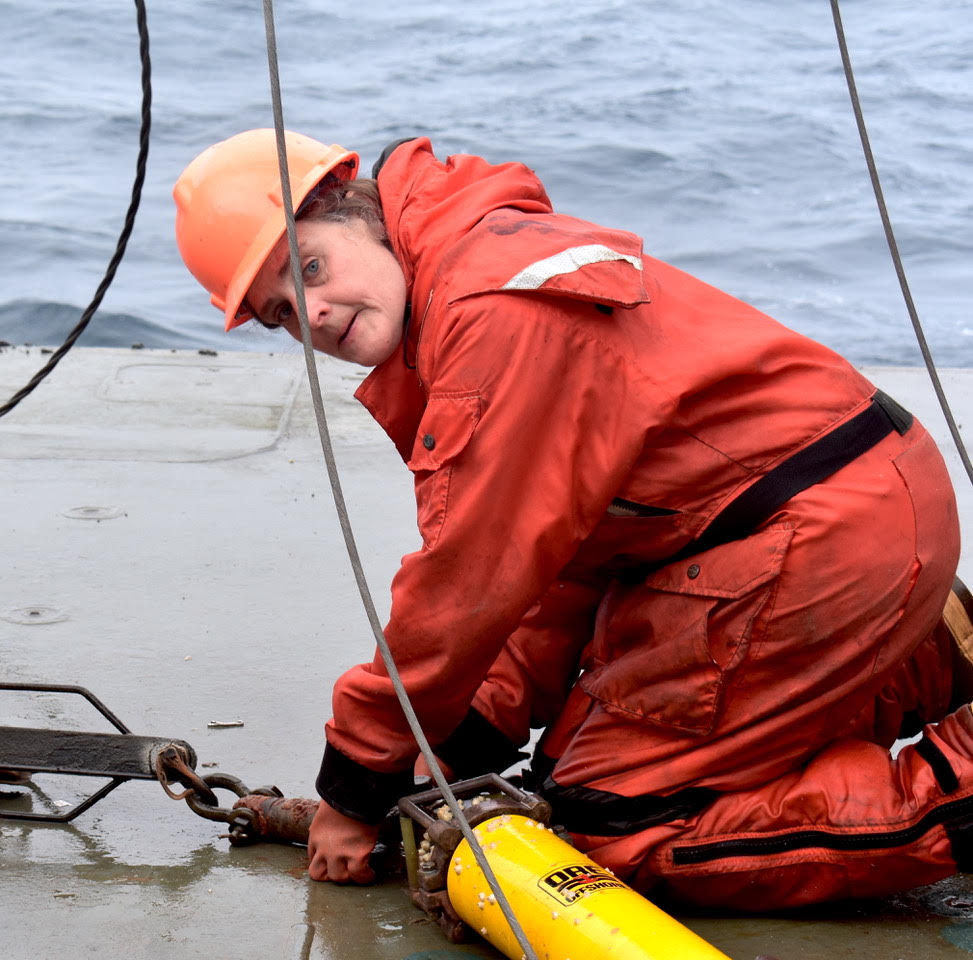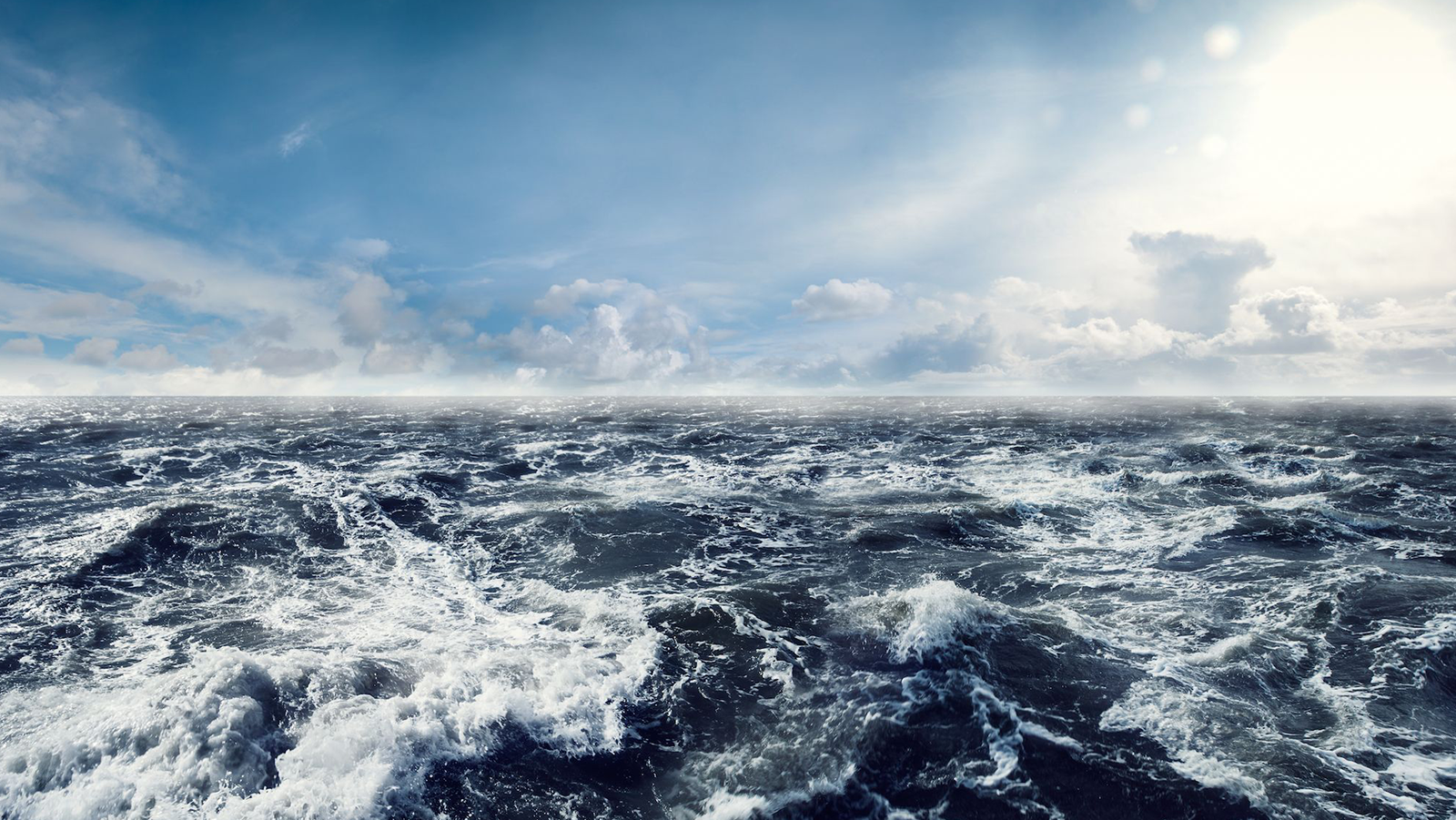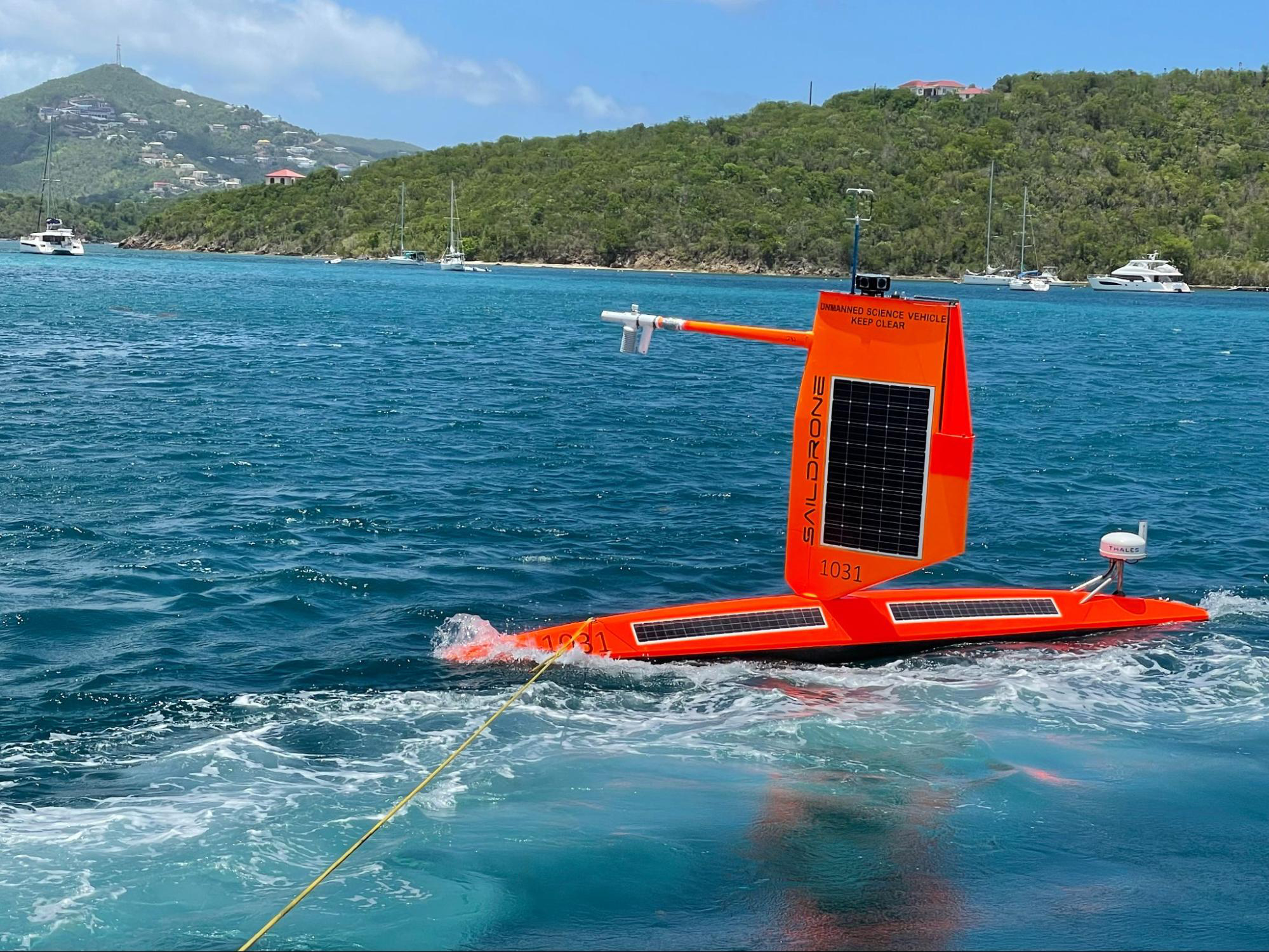ditor’s note: This is the fifth in a series Dispatches from the Arctic on the August science cruise by NOAA and partner scientists aboard the Coast Guard icebreaker Healy. Today’s post is from Meredith LaValley of the Interagency Arctic Research Policy Committee.
On a chill morning near Icy Cape, Alaska, NOAA’s Dr. Catherine Berchok, dressed in a bright orange, mud-stained mustang suit, was at work retrieving moorings that record the sounds of passing whales and other marine mammals throughout the year. Marine mammals are considered sentinel species for helping understand the health of an ecosystem.
Berchok of the NOAA Marine Mammal Laboratory has been working to collect long-term acoustic data on marine mammals in the Bering and Chukchi seas to better understand mammal activity in these remote and changing waters. “The more data that is gathered the more confident we can be in our results, and the goal is to get past the wiggles and into the trend line,” she said.

Stephanie Grassia, a scientist at the University of Washington, sits atop the aft of the ship listening to ocean sounds recorded by sonobuoys, which are deployed over the side of the ship and send back real-time recordings. Acoustic monitoring offers scientists a way to identify a wider range of marine mammals than is possible by sight. This information can be corroborated with visual observations to identify mammal’s species.
Jennifer Stern and Jessica Lindsay of the University of Washington are the marine mammal observers on Healy this year. They spend their time looking through binoculars on the ship’s bridge for sporadic appearances of whales as they surface. When they see signs of marine mammals such as spray from a blowhole, a whale’s tail as it dives, or a mud plume left by gray whales feeding on benthic life, they record the location and time of the spotting.
The long-term data on Arctic marine mammals is important to Arctic communities, scientists and decision makers. In addition to identifying marine mammals by their sounds, there is much to learn about what mammals’ sounds may tell us about their behavior. It may take generations to answer some questions like how long a particular whale species lives, said Dr. Berchok. These and other questions are the reason for maintaining acoustic monitoring over time. Someone in kindergarten today may one day use the recordings gathered today to make discoveries in the future.



